I have some trouble with my normal matrix.
vs.glsl
#version 440
in vec3 vPosition;
in vec3 vNormal;
out vec4 eyeCordFs;
out vec4 eyeNormalFs;
uniform mat4 model;
uniform mat4 view;
uniform mat4 proj;
void main()
{
mat4 modelView = view * model;
mat4 normalMatrix = view * transpose(inverse(model));
vec4 eyeNorm = normalize(normalMatrix * vec4(vNormal, 0.0));
vec4 eyeCord= modelView * vec4(vPosition, 1.0);
eyeCordFs = eyeCord;
eyeNormalFs = eyeNorm;
gl_Position = proj * modelView * vec4( vPosition,1.0);
}
fs.glsl
#version 440
in vec4 eyeCordFs;
in vec4 eyeNormalFs;
out vec3 outputColor;
uniform vec4 lightPos;
void main()
{
vec4 s = normalize(lightPos - eyeCordFs) ;
vec4 r = reflect(-s,eyeNormalFs);
vec4 v = normalize(-eyeCordFs);
float spec = max( dot(v,r),0.0 );
float diff = max(dot(eyeNormalFs,s),0.0);
vec3 diffColor = diff * vec3(1,0,0);
vec3 specColor = pow(spec,3) * vec3(1,1,1);
vec3 ambientColor = vec3(0.1,0.1,0.1);
outputColor = diffColor + 0.5 * specColor + ambientColor;
}
The output of this looks like

Which seemed a bit strange to me. But I knew that I am not scaling anything so I thought I could use the modelView matrix to transform my normals.
So I changed the line
vec4 eyeNorm = normalize(normalMatrix * vec4(vNormal, 0.0));
to
vec4 eyeNorm = normalize(modelView * vec4(vNormal, 0.0));
And the output now looks like this

which looks correct. Am I calculating my normalMatrix the wrong way?